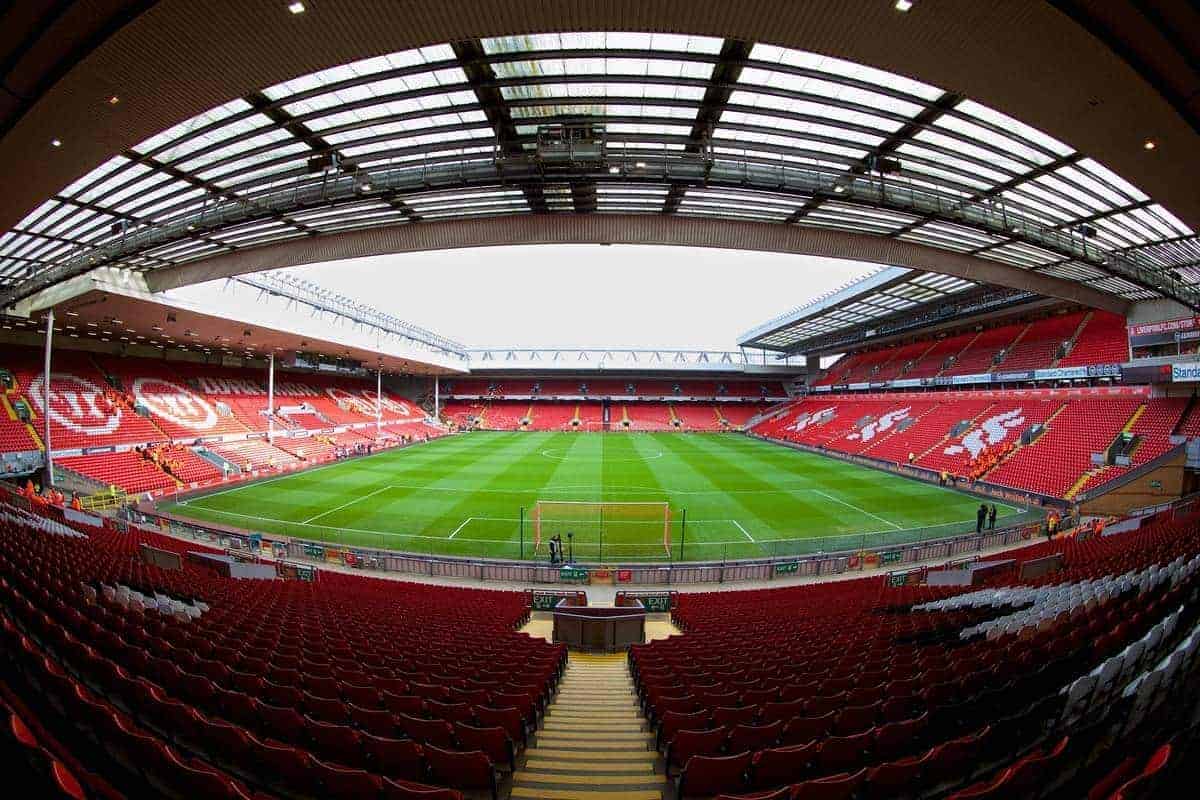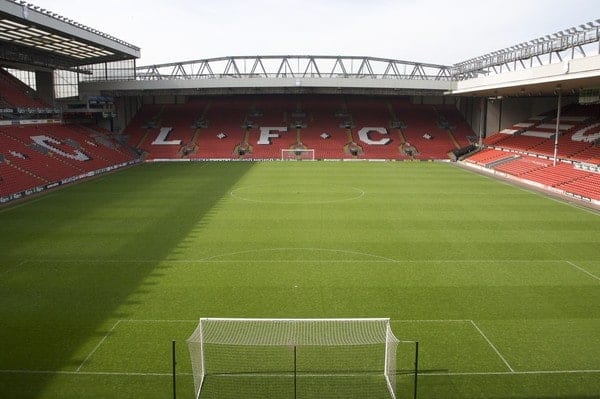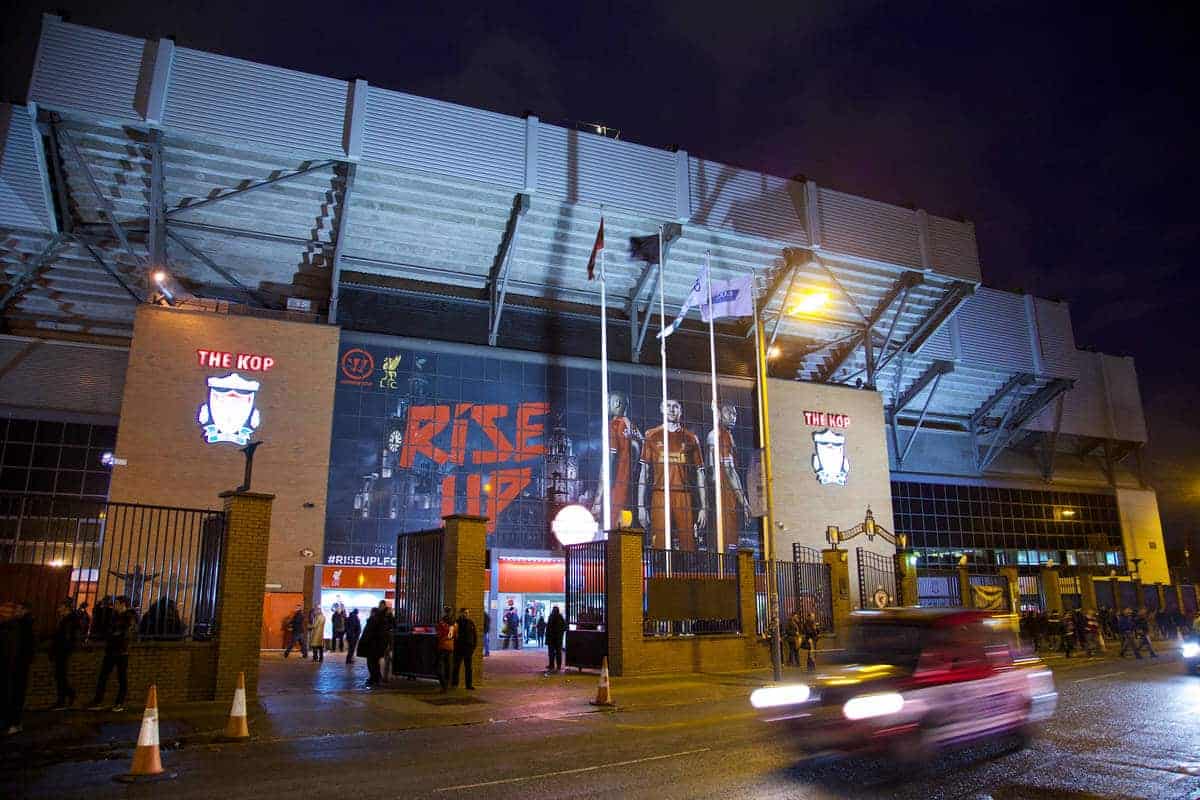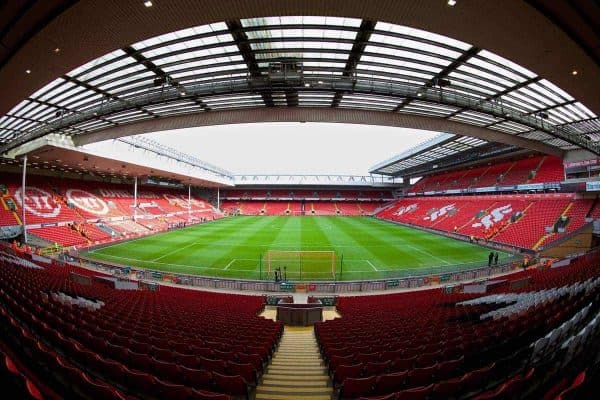Architect Peter McGurk, whose blog on the Anfield redevelopment was linked to by Liverpool owner John W. Henry on Twitter, writes about recent news regarding the regeneration of the stadium.

The recent publication of a draft planning guidance is another significant step toward the regeneration of Anfield and the Anfield/ Breckfield area. When the draft is confirmed, it will have established a solid planning case for both community and club.
Doing, and being seen to do, the right thing is a far cry from the mishandling of Anfield Plus or from throwing tens of millions at pipe dreams. It may seem a long time coming but getting the literally thousands of people who are directly involved on to the same page is a tremendous achievement in such a short space of time.
The club will have look at its business case as carefully and as comprehensively. More than any other of its direct competitors, this club understands that it must be the cutest with the money. Together, the planning and business cases will be a solid basis to take the schemes forward with greater certainty.
Thus every step has been measured and carefully considered. And this un-common prudence and good sense runs right through the planning and consultation stages to the design of the stadium itself. Neither the club nor council could pre-judge the process by issuing final schemes and detail drawings. But now we can see where the consultations have led and we can glean quite a bit about the stadium itself.
We have all come to understand that a redevelopment can earn as much as a new stadium at half the cost or less. We all expect £72m annual matchday revenue to be not too wide of the mark as a target. We all know it is tens of millions behind United and the London clubs but we all know it’s realistic and worth doing because to do otherwise will net us very little and at huge risk of financial failure.
Most of us remember the extension of the Centenary Stand. We know that the stadium can be extended 365 (minus 19) days a year building higher and behind the existing stands. Some work must go on in the summer for sure but there is no reason to lose revenue during construction. With an application in this year, a newly extended Main Stand in 2016 is not unrealistic.
The club has got closer to a more accurate calculation of the ‘sweet spot’ of capacity. The final figure will be tempered by the sight angles of the existing stadium and the ingenuity of the design.
Whether it’s 58,000 or 61,000 or expandable to 64,000, the club knows to the best of its knowledge that the stadium will be the most realistic balance of demand, ticket price and construction cost.
Whatever the chosen capacity and whenever the roof goes on any particular stand that’s about it for that stand. To expand further the club would need to look elsewhere in the ground.

The (Upper) Centenary Stand has a useful life in front of it and outside of better hospitality is the most difficult technical challenge to expand.
A dominant Kop is part of Anfield but extending backwards is difficult, expensive and disruptive. A new roof for not many extra seats is difficult to justify.
Widening the Kop by filling in the corners (like it used to be) would work in a limited way but to expand significantly, the potentially higher Anfield Road End corners are the place to go. Unfortunately corners are complicated and complicated is more expensive.
This year’s TV deals have been a massive boost to income and the relative importance of the stadium income has fallen behind – there are certainly less risky ways of making money. But while it still matters, ticket prices are not going to get cheaper for many – not so long as player costs and competition are what they are.
To put stadium revenue and player costs into perspective, the additional net income from the stadium might be between £10m and £15m or just about our most expensive player’s wages at £200,000 per week.
The club has done its research. It will size the stadium carefully and it will hope or expect it to be more or less full every game to make the cost of it work.
The different types of family, premium and standard seats will create a wider pricing structure that will appeal to more of the people more of the time, whilst creating the financial surplus to support the development of the team. Yes, there will be more of the more expensive seats (and some premium seats will be eye-watering) but there will be even more of the less expensive ones.
A wider pricing structure, greater pre and post match facilities in an Anfield Square for a longer day, a multitude of ‘price entry points’ – will be something for everyone. To get the kids and future generations of support in. To get as many as possible in at all levels of affordability. To fill the ground. More people. More noise. More atmosphere.

The design will be a simple and straightforward extension on two sides with the majority of new seats in the Main Stand in as few tiers as possible. There, there will be a significant number of premium seats with linked hospitality suites at or around the half-way line, at or around mid height. Some may have to or want to make way for premium seats but with an additional net 10,000 or so standard seats for even a Category A match, there will be better choice and greater availability.
The club has the detail of the season ticket survey. Certainly the cost of a whole season in one go is pricing out many, particularly the young. Given the increase of capacity and the potential need to allow more people to attend fewer games to fill the ground, the number of season tickets might rise only at the same rate as the capacity increases. At that, that would be an additional 5,000 season tickets and that would be too many.
The outcome is a simple stadium. Not a cheap stadium but a cost-effective stadium. Large blocks of seating. Close to the pitch. Rising as sharply as regulation allows. All the columns and overhangs gone. Clear and unobstructed views for everybody to every part of the pitch and every part of the ground. Plenty of hospitality for all groups. A strong roof line. Dominant. Intimidating. In short, a proper football ground.
Such a stadium would be a great stadium. An awesome stadium. And all the better for being Anfield.

















Fan Comments